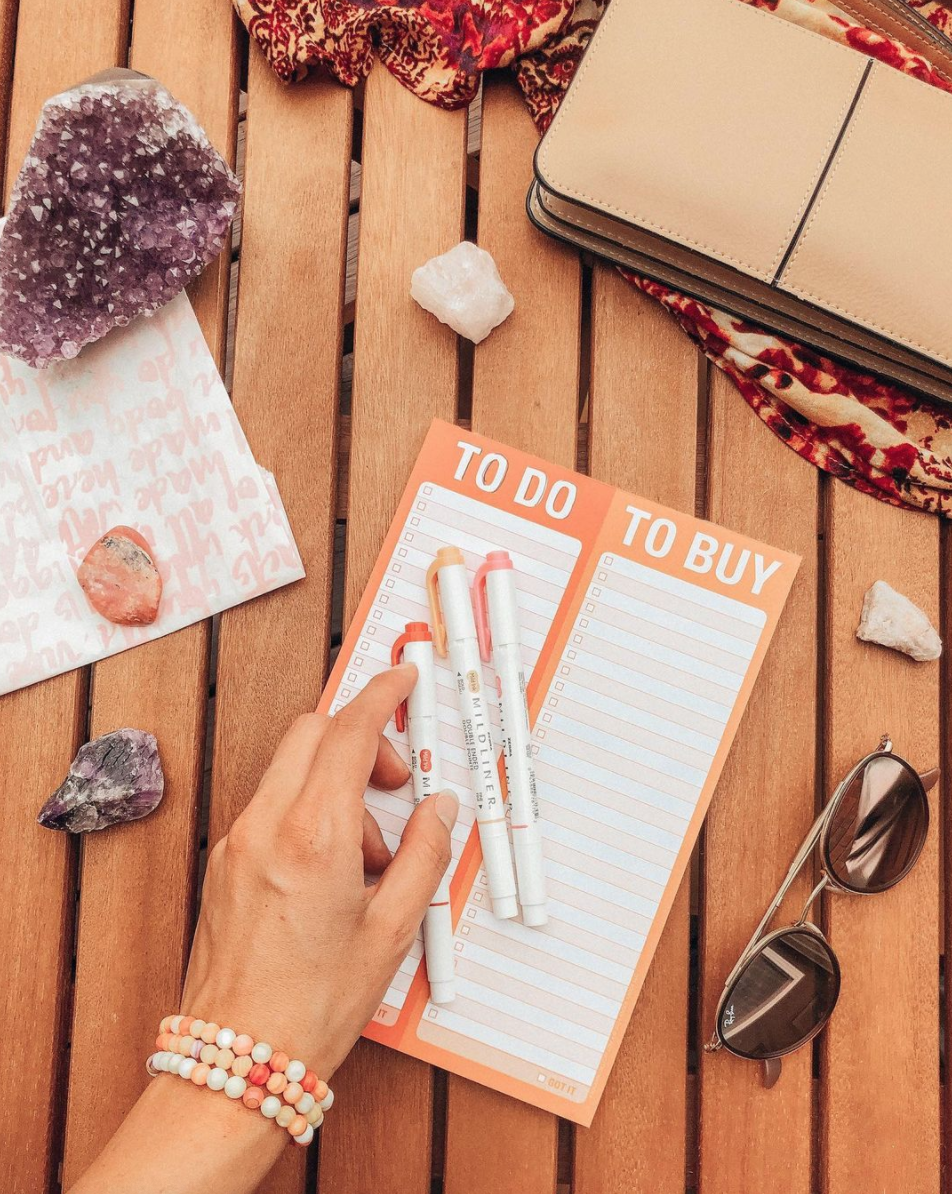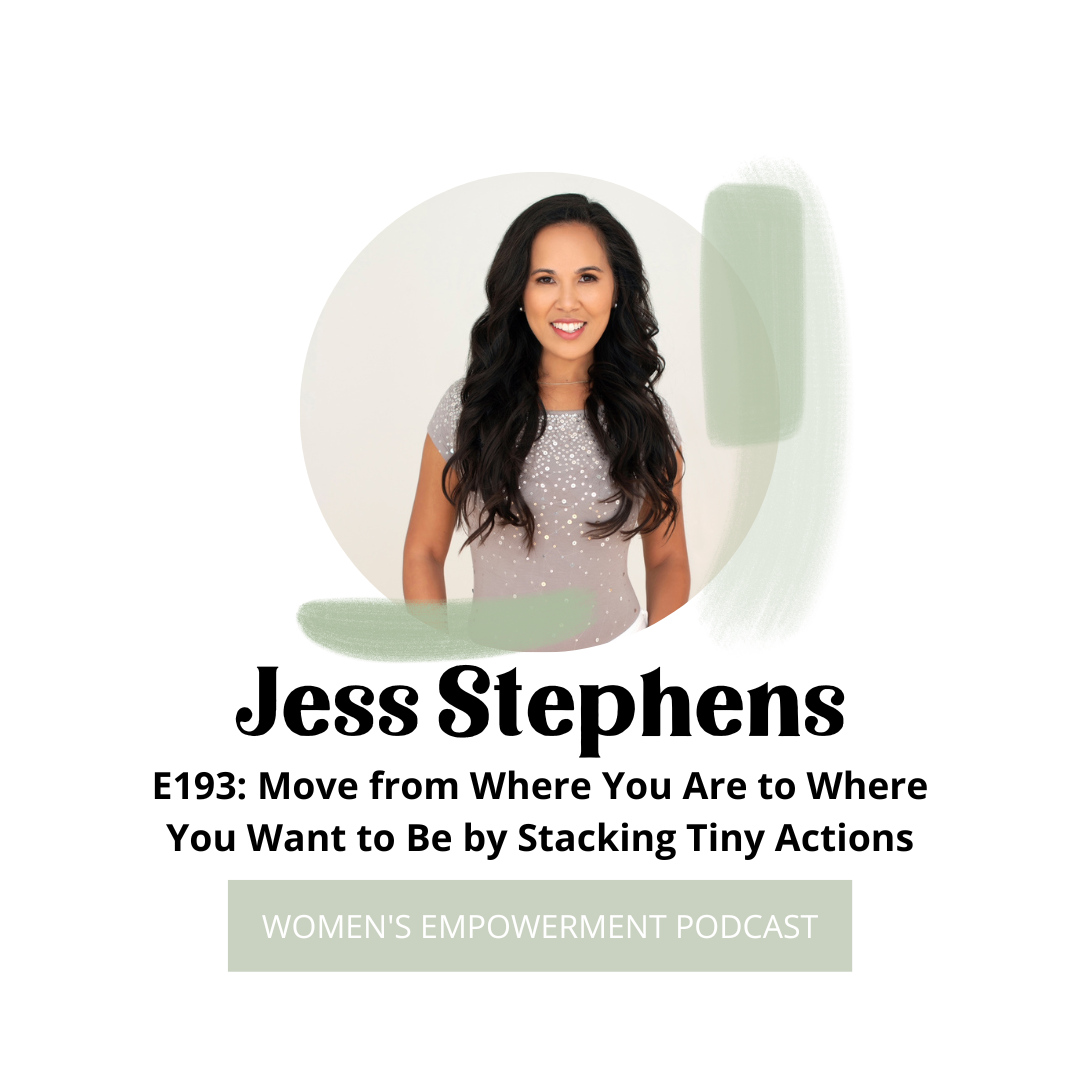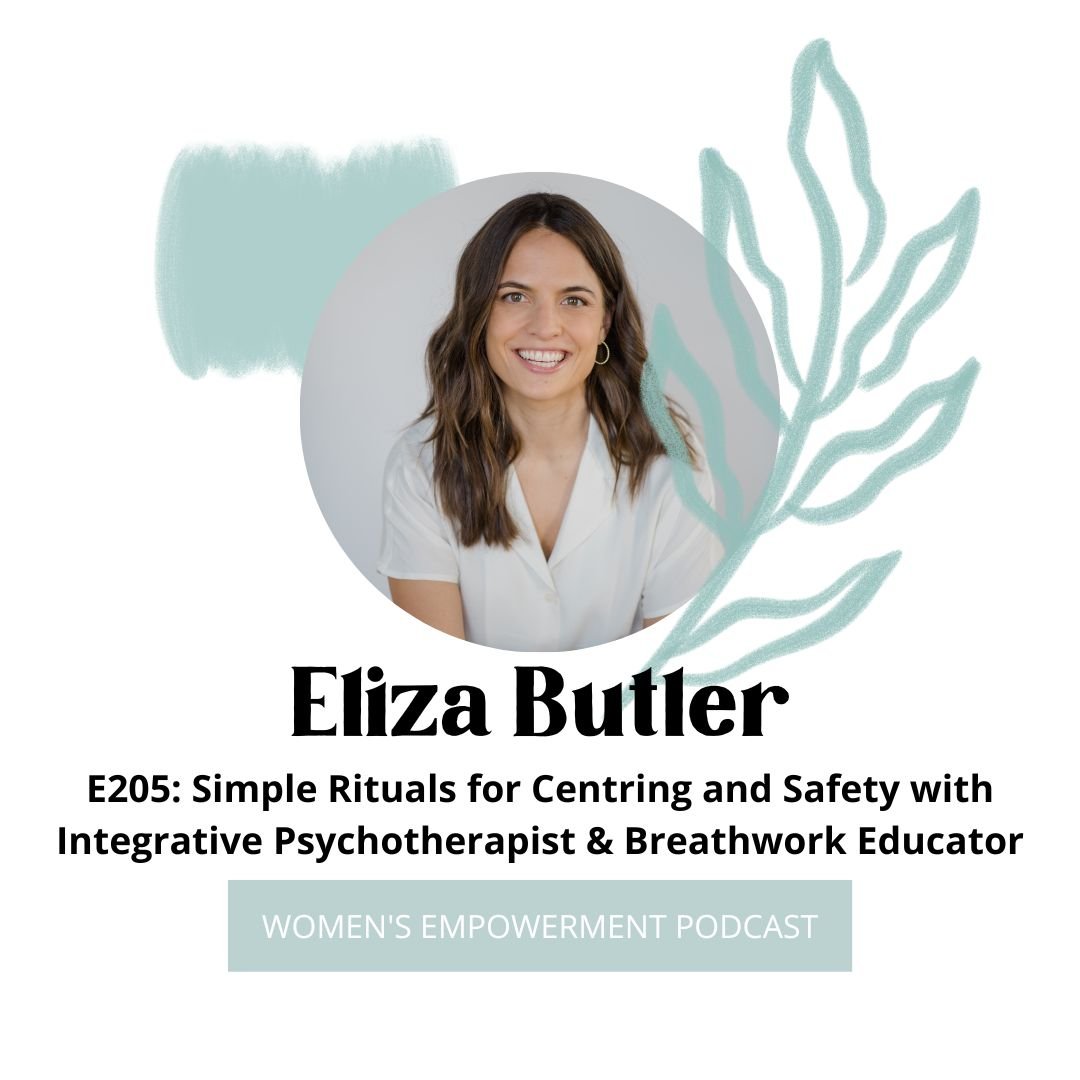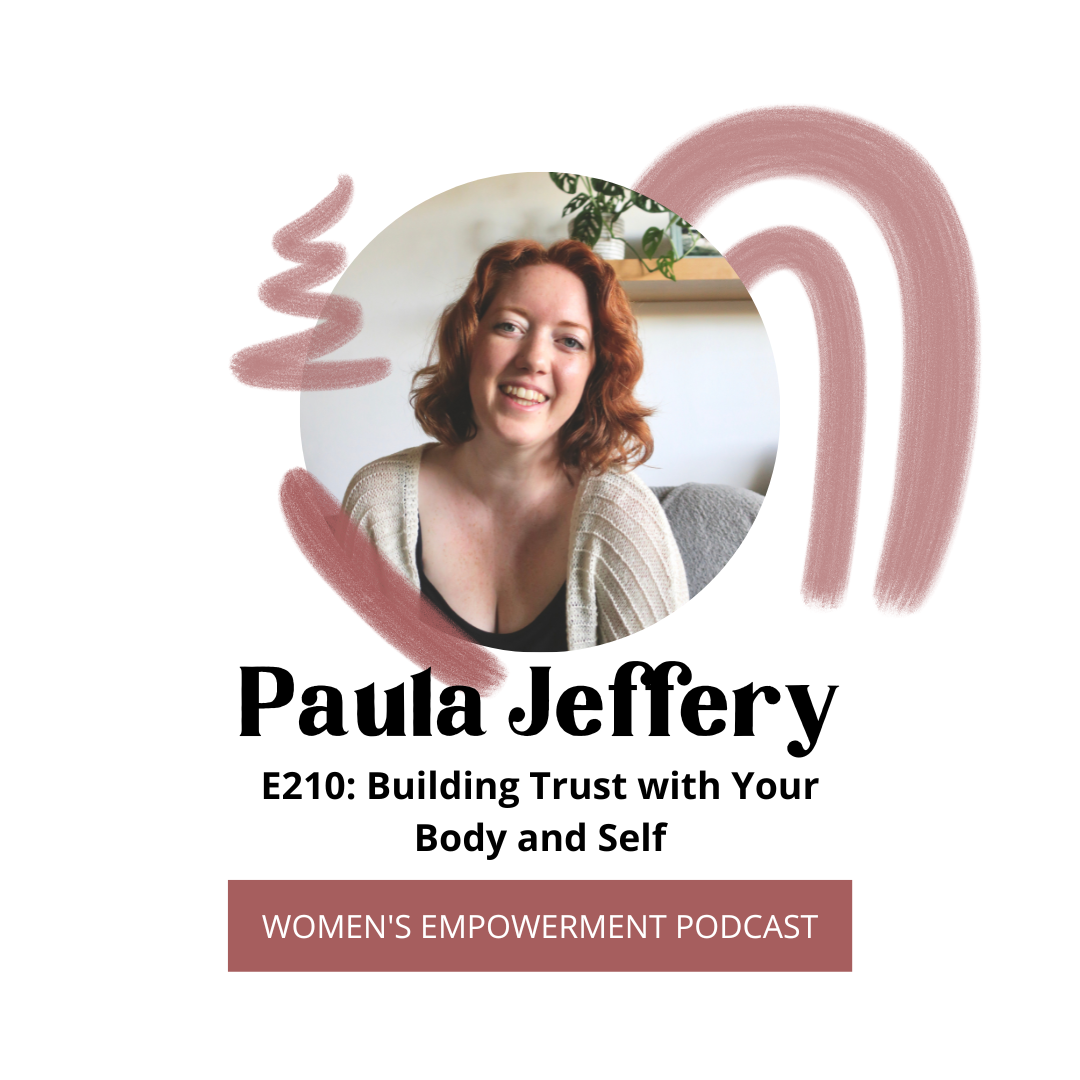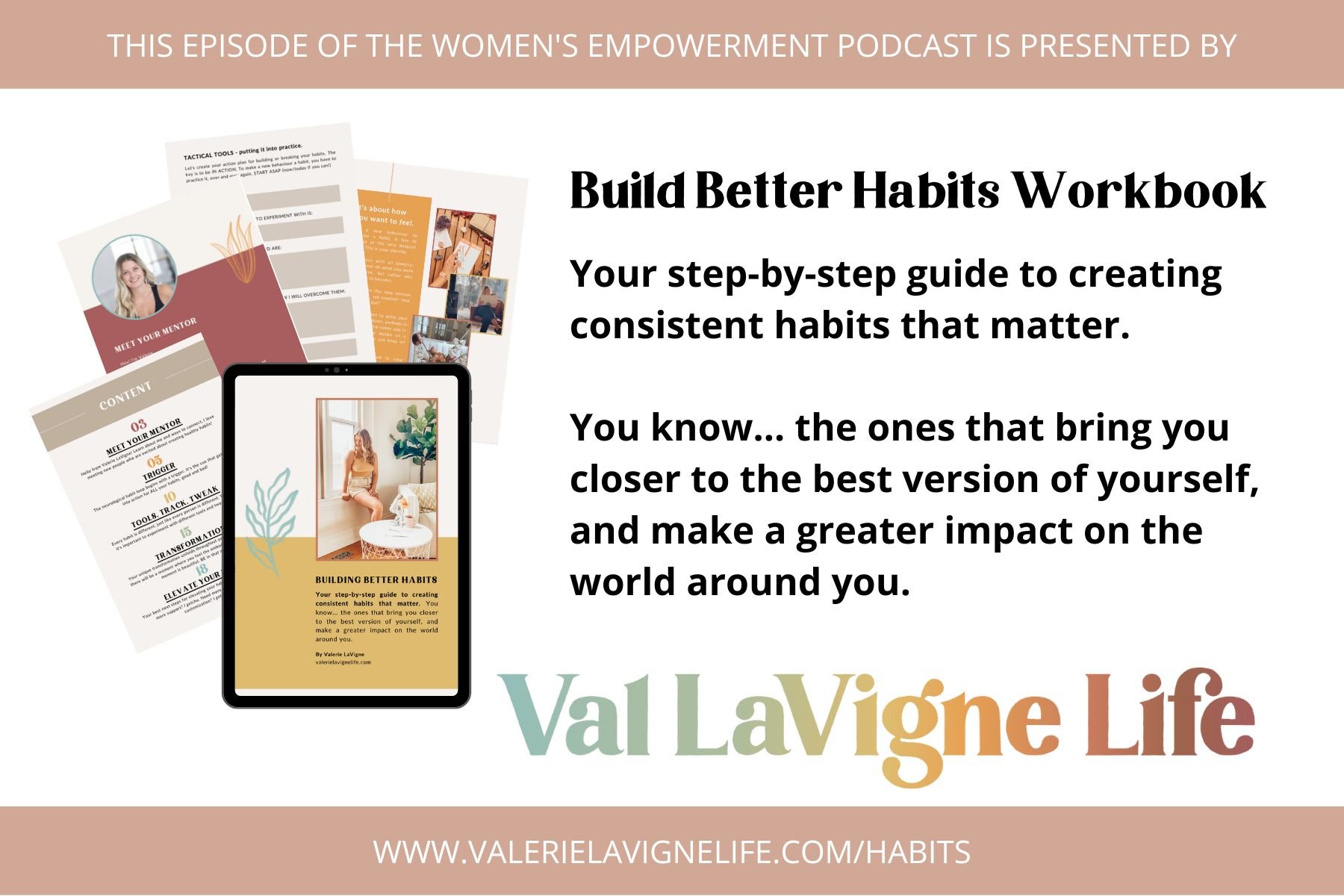E218:This Episode will FINALLY Get You to Start and Stay Consistent with Your Self-Care Routines
That’s it! No more excuses. If you’ve ever said, “I don't have time for self care routines” or “I need to keep up with the industry so something’s got to give and working out isn’t a priority.” or “I’ll take better care of myself when life is less busy in a few months' time.” or something along those lines - then this episode is for YOU!
Leave a review on Apple Podcasts
[00:52] I’ve been told many times that I am a patient and understanding person. And while I believe this to be true, I also have lost my patience for weak excuses as to why people cannot start prioritizing their mental, physical, and emotional health.
Why? Because our health is EVERYTHING. I often think of the quote, “A healthy person has a thousand wishes, a sick person only has one.”
If you aren’t taking care of your health now, it’s just a matter of time before you “get sick.” This could manifest as mental exhaustion and burnout, or your body physically shutting down, or feeling unfulfilled and stressed the F out.
Here’s the good news: you have a choice.
You can choose to prioritize your health and wellness today. On your own terms, so that you can feel great inside and out.
OR
You can choose to ignore this message and let the Universe take over. And one day, possibly in the near future, maybe in the distant future – but sometime in the future it won’t be your choice anymore. It will be the only response, the last response to be able to keep going will be to choose your health first.
I shared a reel on instagram, and the audio speaks to this perfectly. The original audio is by @michael.c.lantz I want to play it for you here.
I hope you’re nodding along with me at the truth and accuracy of this message. And honestly, I’m not here to berate you. You’re listening to this podcast, and that already tells me that you care about your health and wellness, even if it’s just a little wee bit! That matters.
What I am here to share is the reality of our self care routines. The reality is this: WE HAVE TIME TO LOVE, APPRECIATE, NOURISH, AND CARE FOR OURSELVES.
In fact, today I am going to share several ideas and options for how to take better care of yourself whether you have 5, 10, or 30 minutes in your day.
This episode is here to help you FINALLY start and stay consistent with your self-care routines. Because boo, you don’t have time not to.
Alright, let’s get into it!
[03:50] Self-Care Routines You Can Do In 5 Minutes
The 5 Minute Journal – I purchased this journal at the beginning of the year and I wanted to use it in my winter 21 day healthy habit challenge.
If you don’t know about this challenge, it’s a wonderful way to work with me and stay accountable for your self-care routines. I run the challenge once per season. We connect together for 21 days. It includes daily inspiration and tips on instagram “close friends list” stories aka private stories. Weekly check-ins via text or voice notes in the DMs, community support, one group coaching call/workshop, and all of the benefits you get from doing your habits themselves.
Our next challenge is coming up depending on when you’re listening to this episode. But you can either join our next challenge or the waitlist so that you’ll know when it is by going to www.valerielavignelife.com/challenge
So anyway, the journal. I bought the journal and have been using it for a little over two weeks, and I’ve got to say I really love it. They’ve done an excellent job with keeping the prompts simple yet meaningful. It’s one of the only habits I’ve started and kept so quickly. Usually it takes me more time to get into a habit, but this one has been practically seamless. Could be because of the challenge though!
Another excellent way to practice self-care in under 5 minutes is by doing a Head to Toe Body Scan – I used to start and end some of my yoga classes with this practice. To complete this body scan, start by closing your eyes. Take a few gentle breaths and scan your entire body and being, starting with the crown of your head. As you scan, notice how each part of your body is feeling. Is there tension, tightness? Is there staleness, stagnation? Perhaps you feel calm or spacious. Release any judgment and any tension you may be holding onto. Continue the scan all the way down to your toes. Wiggle around if you need to, soften muscles, and when you’ve completed the scan, open your eyes feeling refreshed.
Similarly, you can do an Energy Audit – I usually like to do this after a body scan. A lot of the time we hold emotional and mental stress within our physical body. The Head to Toe Body Scan helps us release the physical tension, but what about the mental or emotional baggage?
Close your eyes and turn your attention inward. Sit in stillness for a moment if you need to. How do you feel energetically? Is there a symbol, image, or feeling that your body/mind is sharing with you as a clue you can interpret. For example, when I practiced this recently I felt/saw a leaky drain in my mind’s eye. To me this tells me that my energy feels drained, and something is in need of repair for my energy. Take your time in this practice and see what you can interpret, what you can let go of, and how you can replenish your energy.
Take Three Cleansing Breaths – Breathing is an excellent way to shift your energy and physical body. Sit up tall and take a big inhale through the nose. Hold the breath at the top for a couple seconds. Exhale through the mouth allowing all the air to release. As you exhale, imagine the stale energy, and tension leaving your body through the exhale breath. You can repeat this three to five times. And note that you don’t want to exhale in the direction of anyone or anything that you don’t want to put your negative or stale energy on. So breathe away from your friends or your workspace.
Intention Setting Ritual – If you've been following along the podcast for a white, or if you watch my instagram you’ll know that every morning I have an intention setting ritual I do with my morning beverage, usually coffee. To do this practice you’ll want to make a tea, coffee, or favourite beverage of choice – sometimes it’s a protein shake for me. If making a morning beverage is something you do daily, here’s the upgraded/elevated version:
Pour your (morning) brew and breathe. Stir in any extras like collagen, or milk, or sugar, or whatever fun things you add to your beverage. If you don’t add anything, have a ritual spoon you can use to stir your drink. First stir counterclockwise to release negative vibes. Then stir your intention or feeling word or affirmation of the day into your beverage by stirring clockwise three times. Seal the ritual by drawing a pentacle (looks like a star with a circle), and drink the intention/feeling word/affirmation throughout the rest of the morning.
I recognize that I share a lot of tangible actions on this podcast. I’m big on taking action because that’s where I believe the magic happens. I am also a believer in balance and masculine and feminine energy. Sometimes self-care is less about what we can DO and more about what we can NOT do. What’s something you can not do for 5 minutes? Unplug – disconnect. Stop for 5 minutes whatever mindless, or maybe stressful task you’ve been doing to just do NOTHING. Get horizontal. Lie down and close your eyes and do nothing. Stare at the wall if you want to. Touch your plants, taste your coffee. Just be present in the moment to do absolutely nothing.
Speaking of doing and not doing. I think a lot of us believe that self-care is getting massages, or practicing meditation, but it can also be how we interact with ourselves and others in different ways. For instance, being honest with yourself about what you take on and how you help others. A self-care practice you can do in 5 minutes is Say “Hell Yes” or “No Thank You” to Something – Is there an email request you’ve been avoiding? An invitation you haven’t RSVP’d to? What response would fill your cup? Maybe it’s YOU who is wanting something: some fresh air? A dinner date out? A day off? Hell yes! Or No thank you.
Another great self-care practice I used a lot when I felt anxious was the 5-4-3-2-1 Grounding Practice – You may have heard of it before as it is quite well known and used for calming anxiety and reducing stress. Here’s how it goes: notice 5 things you can see. Say them out loud or in your head, 4 things you can feel (can be your clothing, or something on your desk, or the air temperature), 3 things you can hear (anything in your surroundings, or even your own voice calling these things out loud), 2 things you can smell (might need to move around a little for this one (I’ve smelled my clothes before in the moment or a drink close by), and lastly 1 thing you can taste. After completing the practice take a deep breath and sink into your body. Your feet, your seat, anything touching a surface.
To bring some joy, shift energy, and put a big smile on your face, try a Dance Break – Play your favourite song, and get up and dance like no one is watching. Play is such a wonderful form of self-care and it really brings the joy to the moment/the day.
[12:10] Self-Care Routines You Can Do In 10 Minutes
Now that you’ve seen how simple these self-care practices are, and how little time they actually take, let’s dive into some other practices that bring more joy and love into your body, mind, and spirit that only take 10 minutes or less.
Similar to our dance break, you can Stretch or Move Your Body – unroll your yoga mat, and start moving in whatever way feels best for you. If you want to follow a YouTube video, there are lots that are under 10 minutes. Movement is such a great self-care practice because it releases endorphins that make you feel better, and honestly with repetition, your body will thank you for it.
I don’t know about you, but I’ve got a lot of ideas and tasks that live inside my head every day. When my mind is feeling full, or I’m feeling overwhelmed, I love a good Brain Dump – Sometimes I do this pen to paper, but you can do this on your computer or in the notes app on your phone. Write everything down. All of that information needs a place to live, and in our heads is not always helpful. Write it out or type it in your notes, but by all means release it from your thoughts.
Go for a Walk – preferably outside. I love a good midday or evening walk. The fresh air, being surrounded by nature, the sunshine on your face. Even when I don’t feel like going for the walk, I ALWAYS feel better afterwards. Just like stretching, a walk gets us moving! Bonus points if you’re experiencing nature for more elevated benefits.
Sometimes our daily hygiene practices can be really healing and cleansing when we set the intention. Elevate your routine and Take a Cleansing Shower – imagine releasing the stress of the day, or the chaos of the day before as the water washes over you. Let go of any residual feelings, self doubts, or anything else holding you back and as you cleanse your body and your energy field.
Speaking of hygiene practices, you can also turn your Skincare Routine – into a powerful self-care practice. Instead of just slapping on your skincare products, carefully and lovingly massage the oils, serums, moisturizers, etc. into your skin. As you do this, look at yourself in the mirror and say kind things to yourself. Affirm your amazingness and worthiness.
One of my favourite self-care practices is to Learn Something New – Read a book or listen to a podcast. Heck, you’re already doing this one! Even if you don’t learn something, at least you can be inspired or motivated by the message.
Tap into Your Creativity – creativity looks different for all of us. I know for myself that some days I feel artistically creative, or sometimes I feel called to write. However you embody or express your creativity do that. Is it drawing? Sining? Dancing? Playing with different media or tools? Explore new and old passions that help you tap into your creativity.
As much as I procrastinate, I do feel way better after I Declutter My Space – I’m looking at a messy desk right now haha, but dang does a made bed, folded laundry, and clear desk really light me up. It almost feels like you can breathe better when the space is clean, because if you think about it, it’s like having more space/room TO breathe!
So much of self-care is nourishing ourselves. The first thing that comes to mind is nutritious, high quality foods. How to do this in 10 minutes or less? Make a Healthy Snack – cut up some fruits and veggies, make a delicious smoothie, mix up a colourful salad. Prepping some of these ingredients in advance could make this a 5 minute practice. Doing this daily will give your body the love and support it needs to THRIVE!
[16:03] Self-Care Routines You Can Do In 30 Minutes
I hope you’re listening to this podcast episode and recognizing how manageable, realistic, and doable all of these things are. AND you might even be practicing these types of self-care, but now you can perform them with more mindfulness and intention behind them.
When it comes to the self-care routines and rituals that require more time, consider how you can use the 5-10 minute practices and expand on them. Such as combining the shower, and skin care routines. Or the body scan, energy audit and cleansing breaths. Or any combination of your choice.
You can shift the shower ritual to a relaxing bath. Deepen your meditation practice, journal or stretch for longer. Maybe you declutter a whole room instead of just a small space.
In a lot of cases self-care can be connecting with others. Phone a Friend – grab a tea with them (usually my friend dates last longer in person because we like to get chatty!) I have a few friends that I call while we’re both on a walk. We live in different provinces, or different countries and we can still feel connected and catch up on eachother lives while walking and talking together!
If it feels good for you, Rest or Take a Nap – a quick 20-30 minute nap can do wonders for your body and mind, especially if you had a rough sleep the night before.
All of this is possible for you. Maybe not all at once or all in one day, but SOMETHING in this episode will support you in your self-care practices – NO EXCUSES.
My boyfriend likes to tell me “I have an answer for everything” and I like to think of it more as, “I have a solution for everything.” No excuse can get you out of taking care of yourself. There is only one of you. You are unique, you are rare, you are worthy. Don’t let anyone tell you differently, including yourself. You can do this.
Podcast Host
Valerie LaVigne
Valerie is the creator and founder of Valerie LaVigne Life and the Women's Empowerment Show. She helps busy and empowered women create healthy habits so that they can become the best version of themselves and transform their lives. Learn more about Valerie here!









